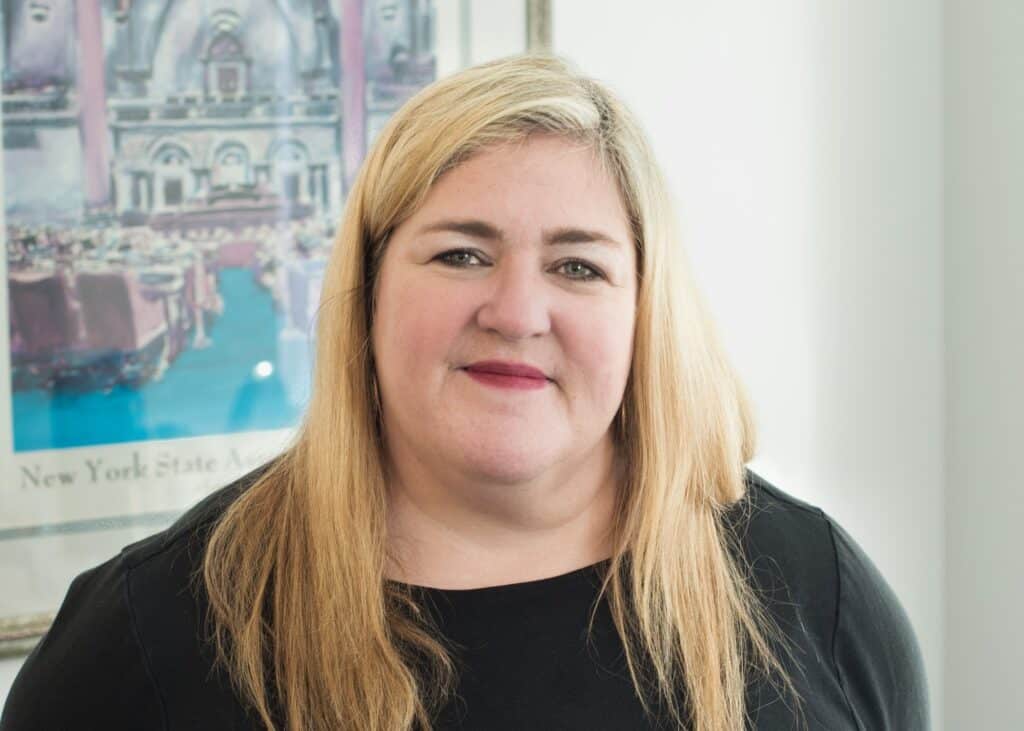What Can Be Done About Insurance?
NH&RA Panelists Explore Ways to Rein in High Insurance Costs for Affordable Housing
By Pamela Martineau
6 min read

Meet with your underwriter in person, provide as much data as possible on relevant inspections and offer photos of improvements you’ve made to affordable housing properties.
These were just a few tips offered at the National Housing & Rehabilitation Association’s Summer Institute Panel: “What Can Be Done About Insurance?” Moderated by Sharon Dworkin Bell, NH&RA co-founder and executive director of the Council of Large Affordable Housing Owners (CLAHO), the panel explored ways affordable housing developers and property owners can bring down the rising cost of insurance on their properties.
The panel also delved into a new law in New York aimed at prohibiting insurance carriers from discriminating against properties that house low-income residents or maintain affordability restrictions.

“What we want to do in this presentation is not talk about the problems but talk about some solutions that you as owners of portfolios and developers can put into place and some solutions that are happening in legislatures,” explained Dworkin Bell.
The panel featured Jerry Martin, senior vice president at McGriff Insurance Services, and Deborah VanAmerongen, strategic policy advisor in Nixon Peabody’s Affordable Housing practice.
Meet with Your Underwriters and Get Control of Your Property Risk Exposures
Developers and property owners who travel to London to meet with underwriters might also want to consider meeting with domestic carrier underwriters as well.
“While London is certainly an important piece of most any shared and layered property insurance program, it’s not the only driver out there,” Martin said. “There are insurance companies that play equally as big a part of your programs that have underwriters and headquarters in New York, Dallas and Atlanta. I would encourage you to talk to your broker about meeting underwriters with carriers that participate in your programs…I think it certainly moves the needle regarding how you’re viewed from an underwriting perspective.”
Martin also said that property owners can mitigate costs by taking additional risks, such as higher deductibles or retentions and captives. Understanding probable maximum loss is key to constructing an accurate and effective property program. Martin said that he regularly sees property programs that are not scientifically structured based on actuarial modeling studies.
Updating, renovating and generally cleaning up properties is also critical to keeping insurance rates in check, Martin added.
“They’re (insurers) going to take note of that, and it’s going to be important for your properties to be what you’ve held them out to be,” explained Martin.
And the more data a property owner or developer can provide the insurer, the better, he added.
“The more data you can provide that paints your portfolio in a better light is going to only help you in the underwriting process,” he said.
For example, if an owner is looking to insure an older property built in the 1970s or 1980s that has been renovated, it is critical to be specific on what exact renovations have been made or insurers may assume only cosmetic changes, such as painting or new cabinetry and carpet have been completed. Providing photos of improvements and past HUD inspections of properties also helps, he added.
As far as liability coverage is concerned, crime scoring has become no longer an exception but a rule in underwriting general liability exposures for affordable housing risks. Owners can use software, such as crimemapping.com and CAP Index, to determine the type of crime area a particular property is in, as well as assess the risk involved from a crime perspective.
“You can run your own crime scores diligence package to determine (if you are) building or buying in a place that has a high score or some place that has a more acceptable crime score,” he said.

New York Efforts to Rein in Costs
Deborah VanAmerongen, of Nixon Peabody, who is also a member of the executive committee of the New York State Association for Affordable Housing, described how she and others tackled rising insurance rates in the affordable housing space.
“We all started talking about this issue and how much of a dramatic impact it was having on property operations and the ability to make mortgage payments and keep up with maintenance and everything else,” she explained.
VanAmerongen and others began a series of conversations with state officials that ultimately led to the New York State Legislature passing a bill that launched a study of the problem. The ensuing report found that the state had no prohibition on discrimination in the pricing of policies on affordable housing.
“A lot of insurance companies, when they are pricing a policy, giving you a quote, (will) send out a questionnaire…with questions like – ‘Do you have residents with Section 8 assistance living in the property? Is the property restricted by area median income? Do you have a regulatory agreement with a government agency,’” she explained.
VanAmerongen said the group of advocates began looking more deeply at the issue and found higher rates for insurance of affordable properties, yet no significant difference in the rates of claims at affordable properties versus multifamily properties. As a result, the group lobbied the New York Legislature to include a provision in the 2024 state budget that would prohibit insurance companies from discriminating based on the fact that a property houses low-income residents or has affordability restrictions.
“So that is now the law of the state of New York,” VanAmerongen said.
VanAmerongen added that an unintended consequence of the law could be that insurers choose not to write policies for affordable housing in New York. To address the already existing dearth of insurers writing policies for affordable housing properties in New York City and the state, the advocates are working to form an insurance cooperative where affordable housing owners and developers pool resources to develop a model policy for the market. The cooperative is called Milford Street Association Captive Insurance Company.
“It is available to properties that have affordability restrictions,” said VanAmerongen, adding that the cooperative can offer up to $1 million in liability insurance, and may soon offer up to $5 million.
“It is an alternative in the market,” she explained. “The owners who chose to opt in will pay a $25 per unit fee as sort of an entrance fee to go into this in addition to their premiums.”
Parametric Insurance
Martin mentioned another form of insurance that is relatively new to the market: Parametric insurance is indexed-based insurance that covers the probability or likelihood of an event happening, such as a flood or a hurricane, instead of indemnifying the actual loss incurred from the event. It is an agreement to make a payment upon the occurrence of a covered event meeting or exceeding a pre-defined threshold or parameter, hence the name parametric insurance. Covered events could be earthquakes or floods where the parameter or index is the magnitude of wind speed or water depth, respectively.
Martin indicated that claims are typically paid much quicker and without a specific claim adjustment framework. While the policies are not necessarily inexpensive, they may be an additional coverage option to add to an existing property program.
Listen to the full presentation at NH&RA’s On-Demand Learning Center.